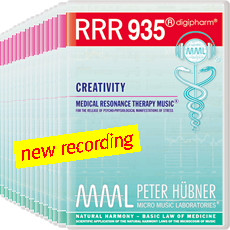Scientific Studies and Clinical Observations
- Strengethening of natural harmony in multiple sclerosis patients: An intensive and effective reappraisal of previously undigested experiences – as a release of past mental stress situations. An unusually deep experience of harmonious values such as trust, security, love, gratitude, inner peace, hope, confidence, freedom from worry, creativity, zest for life and happiness.
- Reinforcement of positive values in children suffering from radiation sickness: The children experienced a clear reduction or dispersion of their fears and worries and a significant fall in the level of personal unrest. In 40% of them the effects went far beyond this and generated a growing feeling of joy, growing satisfaction and inner well-being, an increase of their creative powers through which the course of the somatic illness also became better.
- Stimulation of imagination in older people with atherosclerotic encephalopathy: Many of the patients reported of an intensive stimulation of their imagination and experienced during listening to the music for instance “a forest”, “a lake”, “flowing water”, “sun light” and many other experiences.
- Release of psycho-physiological manifestations of stress in older patients with atherosclerotic encephalopathy: The patients experienced very often a deep muscular relaxation combined with a sensation of warmth and with ease and sleepiness. Furthermore the symptoms “bad mood“, “lethargy“, “tension“ and “touchiness“ were significantly reduced or even completely released. Over and over again they reported of a release of stress, of the acquisition of distance from unpleasant things, the experience of gentleness, inner peace, a kind of freedom from care and a spiritual state of mind.
- Improvement of the functional asymmetry of the brain in epilepsy sufferers: The dynamics of the integral parameter (IPFA) was positive in 73,3% of the patients of this group, in 20% it was undefined and in 6,7% it was negative.
- Improvement of the individual profile of the functional brain asymmetry in women under vacuum aspiration: In 55,5% of the patients we could see a positive dynamic, in 11,1% a negative dynamic. In 33,4% no essential change could be observed.
 |
|
For this indication please use the program:
CREATIVITY |
|
|
|
If you want to look at the studies in detail, please visit: